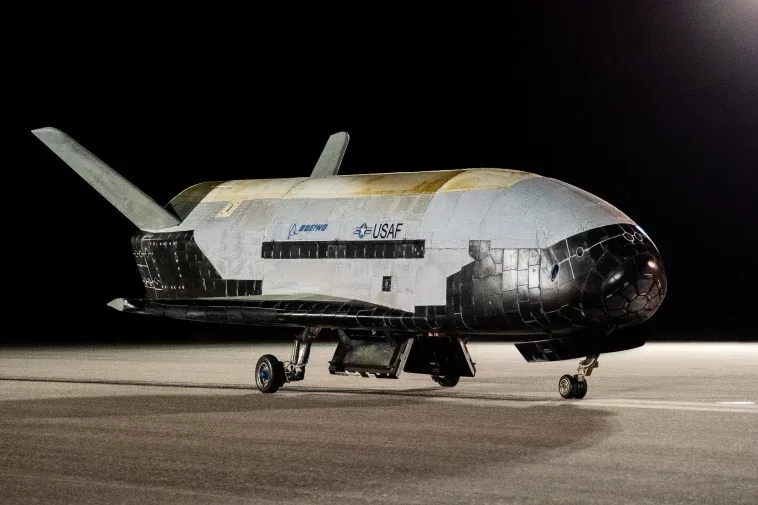(USA Today) A secretive Space Force spaceplane streaked across Florida early Saturday, generating unmistakable sonic booms en route to a landing at Kennedy Space Center that wrapped up another record-breaking mission.
Dozens of sonic boom reports surfaced as X-37B, a robotic military spacecraft that looks like a miniature space shuttle, followed an eastern path across the state and eventually landed at KSC’s Launch and Landing Facility. In a statement, the Space Force confirmed touchdown occurred at 5:22 a.m. EST.
All told, the 30-foot spaceplane spent 908 days in low-Earth orbit, shattering the previous record of 780 days. Its purpose is largely a secret, but the Department of Defense says some of its secondary duties include hosting military research payloads, science experiments, and even NASA investigations.
Though physically small, X-37B has captured countless headlines since its first launch in 2010, mainly due to secrecy but also because of its unprecedented ability to stay in orbit years at a time. It also has the ability to stealthily change its position in orbit.
The spacecraft launches vertically on rockets like United Launch Alliance’s Atlas V and SpaceX’s Falcon 9, then lands like a plane at KSC. This specific mission, labeled OTV-6, took flight on an Atlas V rocket in May 2020.
“With the successful completion of its sixth mission the reusable spaceplane has now flown over 1.3 billion miles and spent a total of 3,774 days in space,” Boeing, which built both X-37Bs in service, said in a statement. “It conducts experiments for government and industry partners with the ability to return them to Earth for evaluation.”
Boeing operates an X-37B processing facility next to the Vehicle Assembly Building at KSC, which is only about two miles from the LLF’s runway in a straight line. After landing, the spaceplanes are transported to the hangar there, processed, then prepped for liftoff on another rocket.
Some of OTV-6’s payloads, according to Boeing and the Space Force, included:
- A new service module to increase the number of payloads carried to orbit.
- An experiment that harnessed solar power and transmitted it back to Earth in the form of microwave energy.
- An opportunity for Air Force Academy cadets to design, build, and deploy a satellite before joining the Space Force.
- And NASA investigations into how space exposure affects materials and seeds, the latter of which could impact how food is grown during long crewed missions.
“The ability to conduct on-orbit experiments and bring them home safely for in-depth analysis on the ground has proven valuable for the Department of the Air Force and scientific community,” Lt. Col. Joseph Fritschen, the Space Force’s X-37B program director, said in a release. “The addition of the service module on OTV-6 allowed us to host more experiments than ever before.”






